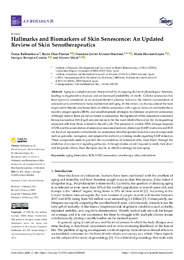Por favor, use este identificador para citar o enlazar este ítem:
https://hdl.handle.net/11000/30472Registro completo de metadatos
| Campo DC | Valor | Lengua/Idioma |
|---|---|---|
| dc.contributor.author | Bulbiankova, Darya | - |
| dc.contributor.author | Diaz-Puertas, Rocio | - |
| dc.contributor.author | Álvarez-Martínez, Francisco Javier | - |
| dc.contributor.author | Herranz-Lopez, Maria | - |
| dc.contributor.author | Barrajón-Catalán, Enrique | - |
| dc.contributor.author | Micol, Vicente | - |
| dc.contributor.other | Departamentos de la UMH::Ingeniería | es_ES |
| dc.date.accessioned | 2024-01-09T09:53:43Z | - |
| dc.date.available | 2024-01-09T09:53:43Z | - |
| dc.date.created | 2023-02 | - |
| dc.identifier.citation | Antioxidants 2023, 12(2) | es_ES |
| dc.identifier.issn | 2076-3921 | - |
| dc.identifier.uri | https://hdl.handle.net/11000/30472 | - |
| dc.description.abstract | Aging is a complex process characterized by an ongoing decline in physiological functions, leading to degenerative diseases and an increased probability of death. Cellular senescence has been typically considered as an anti-proliferative process; however, the chronic accumulation of senescent cells contributes to tissue dysfunction and aging. In this review, we discuss some of the most important hallmarks and biomarkers of cellular senescence with a special focus on skin biomarkers, reactive oxygen species (ROS), and senotherapeutic strategies to eliminate or prevent senescence. Although most of them are not exclusive to senescence, the expression of the senescence-associated beta-galactosidase (SA- -gal) enzyme seems to be the most reliable biomarker for distinguishing senescent cells from those arrested in the cell cycle. The presence of a stable DNA damage response (DDR) and the accumulation of senescence-associated secretory phenotype (SASP) mediators and ROS are the most representative hallmarks for senescence. Senotherapeutics based on natural compounds such as quercetin, naringenin, and apigenin have shown promising results regarding SASP reduction. These compounds seem to prevent the accumulation of senescent cells, most likely through the inhibition of pro-survival signaling pathways. Although studies are still required to verify their shortand long-term effects, these therapies may be an effective strategy for skin aging | es_ES |
| dc.format | application/pdf | es_ES |
| dc.format.extent | 26 | es_ES |
| dc.language.iso | eng | es_ES |
| dc.publisher | MDPI | es_ES |
| dc.rights | info:eu-repo/semantics/openAccess | es_ES |
| dc.rights.uri | http://creativecommons.org/licenses/by-nc-nd/4.0/ | * |
| dc.subject | aging | es_ES |
| dc.subject | biomarker | es_ES |
| dc.subject | ROS | es_ES |
| dc.subject | SASP | es_ES |
| dc.subject | senescence | es_ES |
| dc.subject | senotherapy | es_ES |
| dc.subject | skin | es_ES |
| dc.subject | antioxidant | es_ES |
| dc.subject.other | CDU::6 - Ciencias aplicadas::62 - Ingeniería. Tecnología | es_ES |
| dc.title | Hallmarks and Biomarkers of Skin Senescence: An Updated Review of Skin Senotherapeutics | es_ES |
| dc.type | info:eu-repo/semantics/article | es_ES |
| dc.relation.publisherversion | https://doi.org/10.3390/antiox12020444 | es_ES |

Ver/Abrir:
antioxidants-12-00444-v2 (antiaging) reducido.pdf
896,24 kB
Adobe PDF
Compartir:
 La licencia se describe como: Atribución-NonComercial-NoDerivada 4.0 Internacional.
La licencia se describe como: Atribución-NonComercial-NoDerivada 4.0 Internacional.
.png)